In the competitive world of compact SUVs, two models have garnered significant attention in the market: the Suzuki S-Cross and the Toyota Yaris Cross. Both vehicles offer a unique blend of style, efficiency, and advanced technology, making them strong contenders for buyers seeking a versatile and economical option. This comparison aims to dissect the technical aspects and innovations of these two SUVs to help potential buyers make an informed choice.
Suzuki S-Cross vs Toyota Yaris Cross – Which one offers the better deal?
Two cars, one duel: Suzuki S-Cross meets Toyota Yaris Cross.
Which one wins in performance, efficiency and value for money? Find out now!
Design and Dimensions
Starting with their dimensions, the Suzuki S-Cross measures 4300 mm in length, 1785 mm in width, and 1580 mm in height. This gives it a larger footprint compared to the Toyota Yaris Cross, which is slightly smaller at 4180 mm long, 1765 mm wide, and 1595 mm high. The S-Cross boasts a trunk capacity of 430 liters, providing ample luggage space for family outings or trips. In contrast, the Yaris Cross offers a trunk capacity of 397 liters and varying figures for different variants, making it still a practical choice but slightly less capacious than its Suzuki competitor.
Engine Performance & Specifications
When it comes to engine options, both vehicles present compelling choices for drivers. The Suzuki S-Cross features a selection of both petrol and hybrid powertrains, with power outputs ranging from 116 to a robust 129 HP. The S-Cross achieves a respectable acceleration of 0-100 km/h in 9.5 seconds, making it competitive in terms of performance. The engine choices come with a fuel consumption range of 5.1 to 5.8 L/100 km, while CO2 emissions vary from 116 to 131 g/km, putting it in the D CO2 efficiency class.
On the other hand, the Toyota Yaris Cross is powered exclusively by a full hybrid engine, producing between 116 and 130 HP. However, the performance in terms of acceleration is slightly lagging behind, registering between 10.7 to 11.3 seconds for the 0-100 km/h sprint. The fuel economy results are more impressive, with consumption figures sitting between 4.5 and 4.8 L/100 km, reflecting its C CO2 efficiency class, with emissions as low as 101 g/km.
Transmission & Drive Options
The Suzuki S-Cross offers a variety of transmission options, including a manual gearbox and automated manual transmission, appealing to a wide range of driving preferences. Its available front-wheel drive (FWD) and all-wheel drive (AWD) system enhances its versatility, allowing for better traction on various terrains.
Conversely, the Toyota Yaris Cross comes equipped solely with a Continuously Variable Transmission (CVT). While this choice simplifies the driving experience, the absence of AWD might deter buyers needing additional traction for off-road or adverse conditions. The Yaris Cross retains a front-wheel drive layout, which is standard in this segment.
Interior Comfort & Technology
Both SUVs can accommodate up to five passengers comfortably, but the interior layout and technology features set them apart. The Suzuki S-Cross stands out with its spacious feel and thoughtful design, which includes advanced infotainment options. It features an intuitive touchscreen interface with smartphone integration, providing seamless connectivity for users.
The Yaris Cross, while slightly smaller, does not fall short in terms of technology. It offers a user-friendly infotainment system, and the quality of materials used in the cabin reflects Toyota's commitment to durability and user experience. Additionally, Toyota's focus on safety innovations, such as the Toyota Safety Sense package, adds significant value to the Yaris Cross.
Conclusion: Which One to Choose?
Ultimately, the decision between the Suzuki S-Cross and the Toyota Yaris Cross boils down to individual preferences and priorities. If you value a larger vehicle with more trunk space and multiple drivetrain options, the Suzuki S-Cross could be the ideal pick for you. However, if fuel efficiency, hybrid technology, and a robust safety suite are more important, the Toyota Yaris Cross may steal the spotlight.
Both SUVs have their strengths and weaknesses, and either one would make a promising addition to the compact SUV segment. Whether you crave performance, efficiency, or advanced technology, both the S-Cross and the Yaris Cross stand ready to meet your automotive needs in style.
Here’s where it gets real: The technical differences in detail
Costs and Efficiency:
When it comes to price and running costs, the biggest differences usually appear. This is often where you see which car fits your budget better in the long run.
Suzuki S-Cross has a slight advantage in terms of price – it starts at 21800 £, while the Toyota Yaris Cross costs 23700 £. That’s a price difference of around 1929 £.
Fuel consumption also shows a difference: Toyota Yaris Cross manages with 4.50 L and is therefore somewhat more efficient than the Suzuki S-Cross with 5.10 L. The difference is about 0.60 L per 100 km.
Engine and Performance:
Power, torque and acceleration are the classic benchmarks for car enthusiasts – and here, some clear differences start to show.
When it comes to engine power, the Toyota Yaris Cross has a minimal edge – offering 130 HP compared to 129 HP. That’s roughly 1 HP more horsepower.
In acceleration from 0 to 100 km/h, the Suzuki S-Cross is a bit quicker – completing the sprint in 9.50 s, while the Toyota Yaris Cross takes 10.70 s. That’s about 1.20 s faster.
In terms of top speed, the Suzuki S-Cross performs to a small extent better – reaching 195 km/h, while the Toyota Yaris Cross tops out at 170 km/h. The difference is around 25 km/h.
Space and Everyday Use:
Beyond pure performance, interior space and usability matter most in daily life. This is where you see which car is more practical and versatile.
Both vehicles offer seating for 5 people.
In curb weight, Toyota Yaris Cross is hardly perceptible lighter – 1180 kg compared to 1280 kg. The difference is around 100 kg.
In terms of boot space, the Suzuki S-Cross offers slight more room – 430 L compared to 397 L. That’s a difference of about 33 L.
In maximum load capacity, the Suzuki S-Cross performs somewhat better – up to 1230 L, which is about 133 L more than the Toyota Yaris Cross.
When it comes to payload, Toyota Yaris Cross noticeable takes the win – 510 kg compared to 405 kg. That’s a difference of about 105 kg.
Who comes out on top?
Overall, the Suzuki S-Cross shows itself to be secures victory with a clear margin and secures the title of DriveDuel Champion.
It convinces with the more balanced overall package and proves to be the more versatile choice for everyday use.
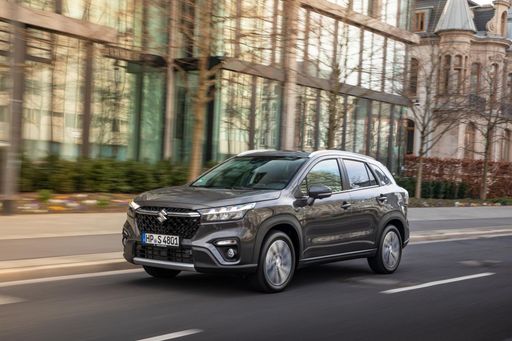 @ Suzuki Motor Corporation
@ Suzuki Motor Corporation
Suzuki S-Cross
Suzuki S-Cross
The Suzuki S-Cross emerges as a versatile crossover, blending urban agility with a rugged presence suited for diverse terrains. Its design combines sleek, modern aesthetics with practicality, offering a spacious interior that comfortably accommodates passengers and cargo for varied journeys. Drivers will appreciate the advanced technology features that enhance both driving pleasure and safety, making the S-Cross a well-rounded option for those seeking reliability and style in a compact SUV.
details @ Suzuki Motor Corporation
@ Suzuki Motor Corporation
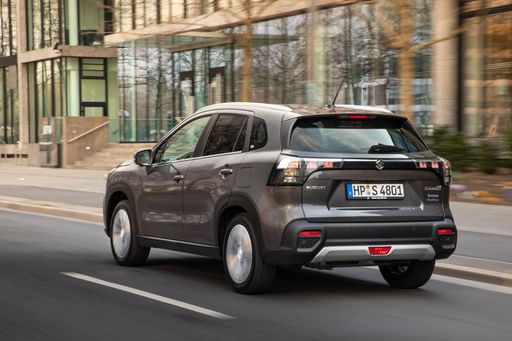 @ Suzuki Motor Corporation
@ Suzuki Motor Corporation
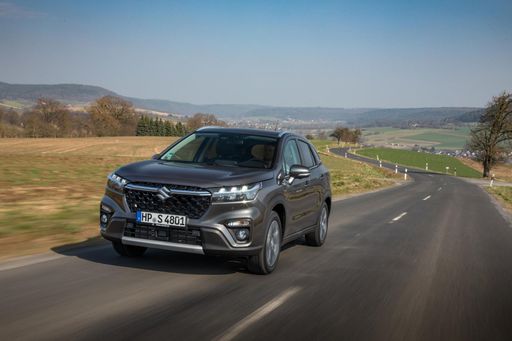 @ Suzuki Motor Corporation
@ Suzuki Motor Corporation
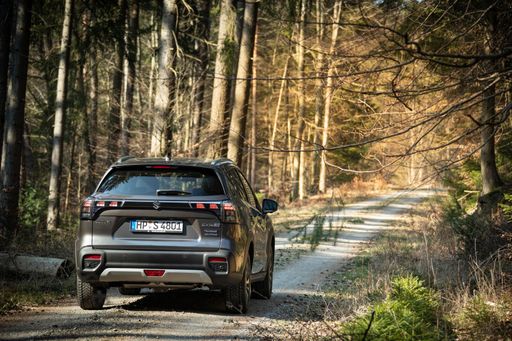 @ Suzuki Motor Corporation
@ Suzuki Motor Corporation
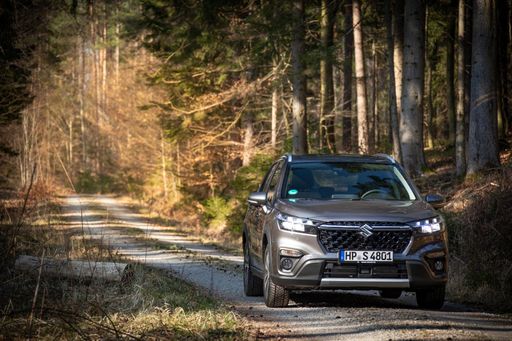 @ Suzuki Motor Corporation
@ Suzuki Motor Corporation
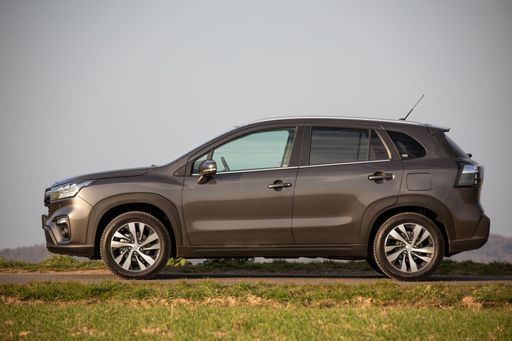 @ Suzuki Motor Corporation
@ Suzuki Motor Corporation
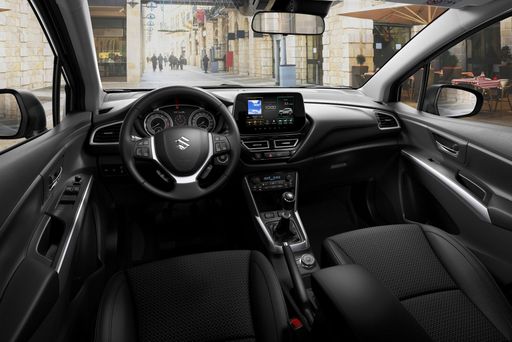 @ Suzuki Motor Corporation
@ Suzuki Motor Corporation
Toyota Yaris Cross
The Toyota Yaris Cross takes the jaunty personality of the Yaris and gives it a taller stance and a bit more practicality, so you get city-friendly agility with added SUV presence. It’s easy to live with, economical on the daily grind, and smartly packaged — a sensible pick for buyers who want fuss-free transport with a touch of character.
details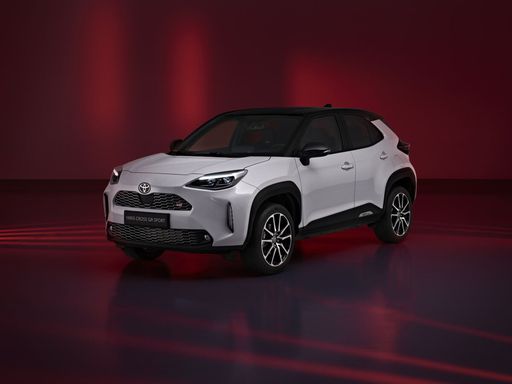 @ Toyota Motor Corporation
@ Toyota Motor Corporation
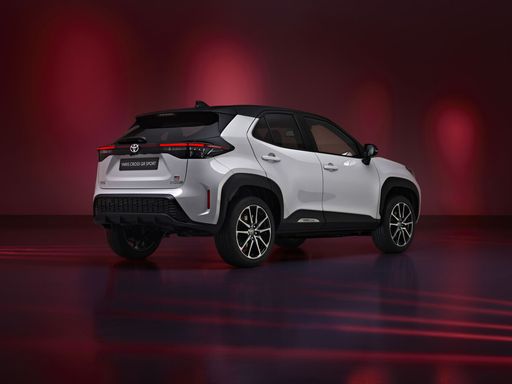 @ Toyota Motor Corporation
@ Toyota Motor Corporation
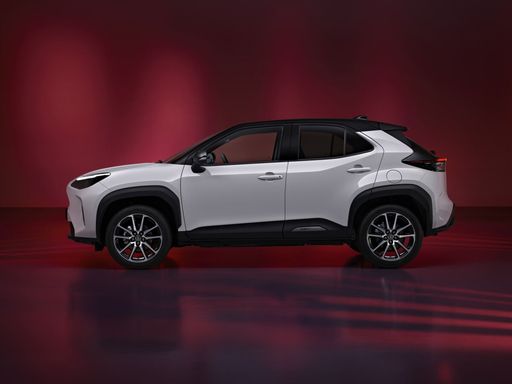 @ Toyota Motor Corporation
@ Toyota Motor Corporation
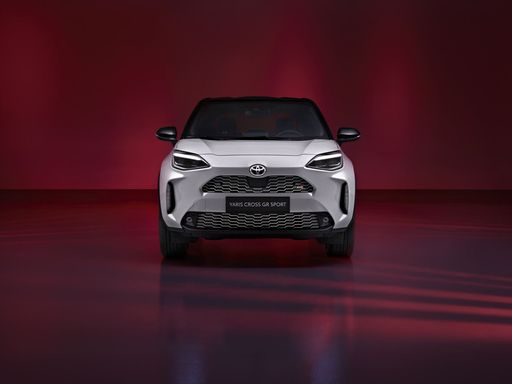 @ Toyota Motor Corporation
@ Toyota Motor Corporation
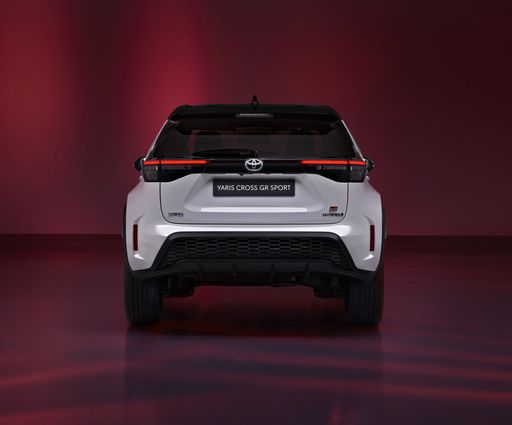 @ Toyota Motor Corporation
@ Toyota Motor Corporation
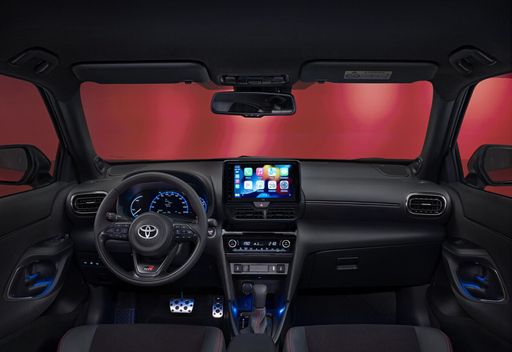 @ Toyota Motor Corporation
@ Toyota Motor Corporation
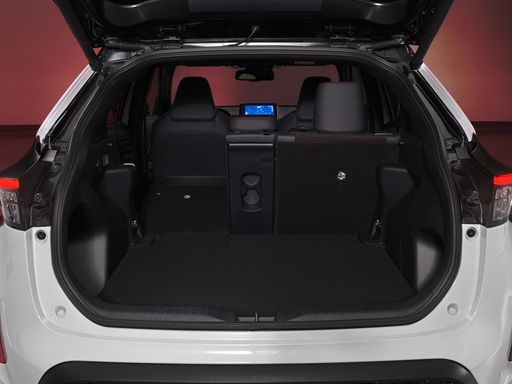 @ Toyota Motor Corporation
@ Toyota Motor Corporation
 @ Suzuki Motor Corporation
@ Suzuki Motor Corporation
|
 @ Toyota Motor Corporation
@ Toyota Motor Corporation
|
|
|
|
Costs and Consumption |
|
|---|---|
|
Price
21800 - 33700 £
|
Price
23700 - 34300 £
|
|
Consumption L/100km
5.1 - 5.8 L
|
Consumption L/100km
4.5 - 4.8 L
|
|
Consumption kWh/100km
-
|
Consumption kWh/100km
-
|
|
Electric Range
-
|
Electric Range
-
|
|
Battery Capacity
-
|
Battery Capacity
-
|
|
co2
116 - 131 g/km
|
co2
101 - 108 g/km
|
|
Fuel tank capacity
47 L
|
Fuel tank capacity
36 L
|
Dimensions and Body |
|
|---|---|
|
Body Type
SUV
|
Body Type
SUV
|
|
Seats
5
|
Seats
5
|
|
Doors
5
|
Doors
5
|
|
Curb weight
1280 - 1435 kg
|
Curb weight
1180 - 1290 kg
|
|
Trunk capacity
430 L
|
Trunk capacity
320 - 397 L
|
|
Length
4300 mm
|
Length
4180 mm
|
|
Width
1785 mm
|
Width
1765 mm
|
|
Height
1580 mm
|
Height
1595 mm
|
|
Max trunk capacity
1230 L
|
Max trunk capacity
1097 L
|
|
Payload
375 - 405 kg
|
Payload
485 - 510 kg
|
Engine and Performance |
|
|---|---|
|
Engine Type
Full Hybrid, Petrol MHEV
|
Engine Type
Full Hybrid
|
|
Transmission
Automatic, Manuel
|
Transmission
Automatic
|
|
Transmission Detail
Automated Manual, Manual Gearbox
|
Transmission Detail
CVT
|
|
Drive Type
Front-Wheel Drive, All-Wheel Drive
|
Drive Type
Front-Wheel Drive, All-Wheel Drive
|
|
Power HP
116 - 129 HP
|
Power HP
116 - 130 HP
|
|
Acceleration 0-100km/h
9.50 s
|
Acceleration 0-100km/h
10.7 - 11.3 s
|
|
Max Speed
175 - 195 km/h
|
Max Speed
170 km/h
|
|
Torque
235 Nm
|
Torque
-
|
|
Number of Cylinders
4
|
Number of Cylinders
3
|
|
Power kW
85 - 95 kW
|
Power kW
85 - 96 kW
|
|
Engine capacity
1373 - 1462 cm3
|
Engine capacity
1490 cm3
|
General |
|
|---|---|
|
Model Year
2024
|
Model Year
2024 - 2025
|
|
CO2 Efficiency Class
D
|
CO2 Efficiency Class
C
|
|
Brand
Suzuki
|
Brand
Toyota
|
What drive types are available for the Suzuki S-Cross?
The Suzuki S-Cross is available as Front-Wheel Drive or All-Wheel Drive.
The prices and data displayed are estimates based on German list prices and may vary by country. This information is not legally binding.
